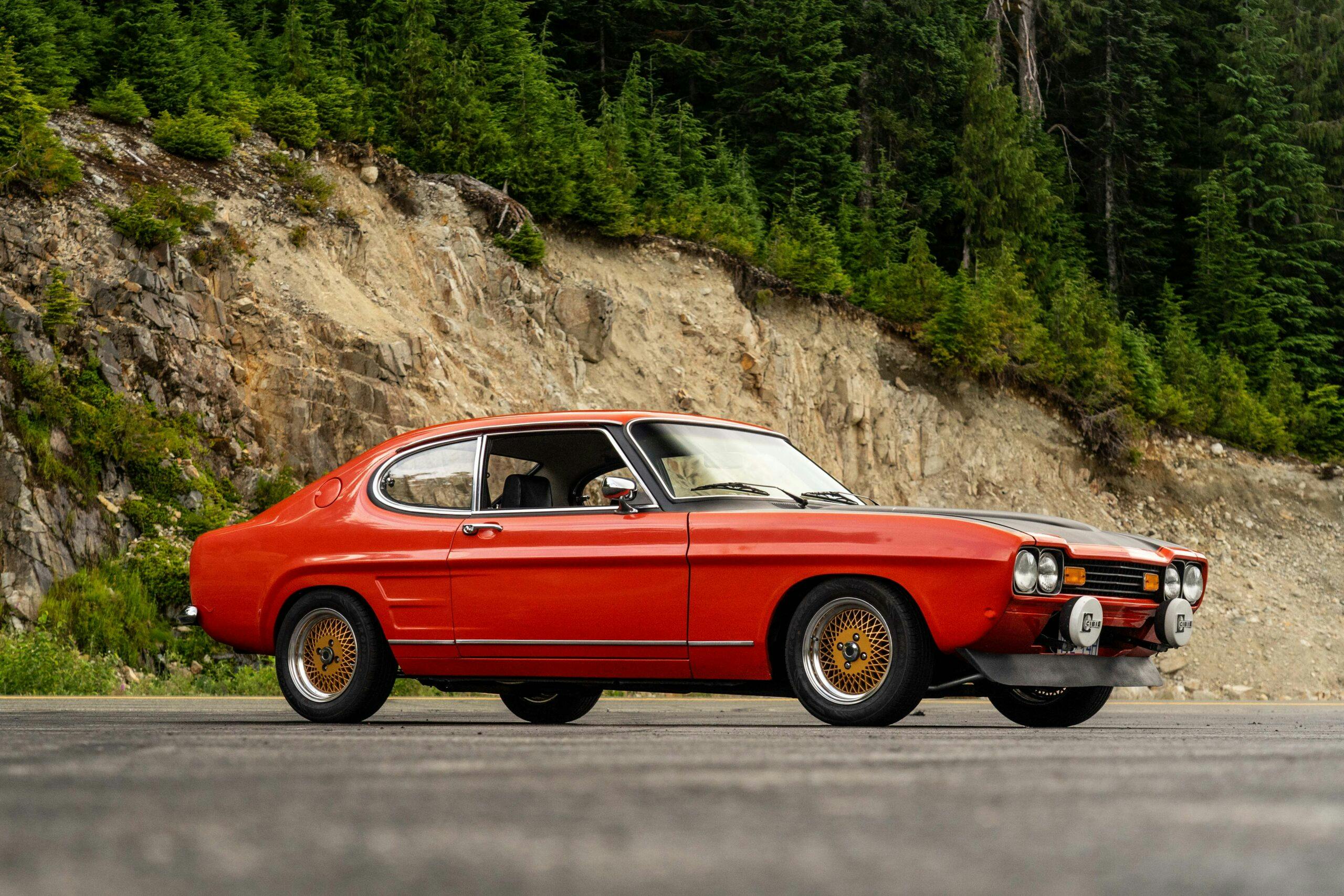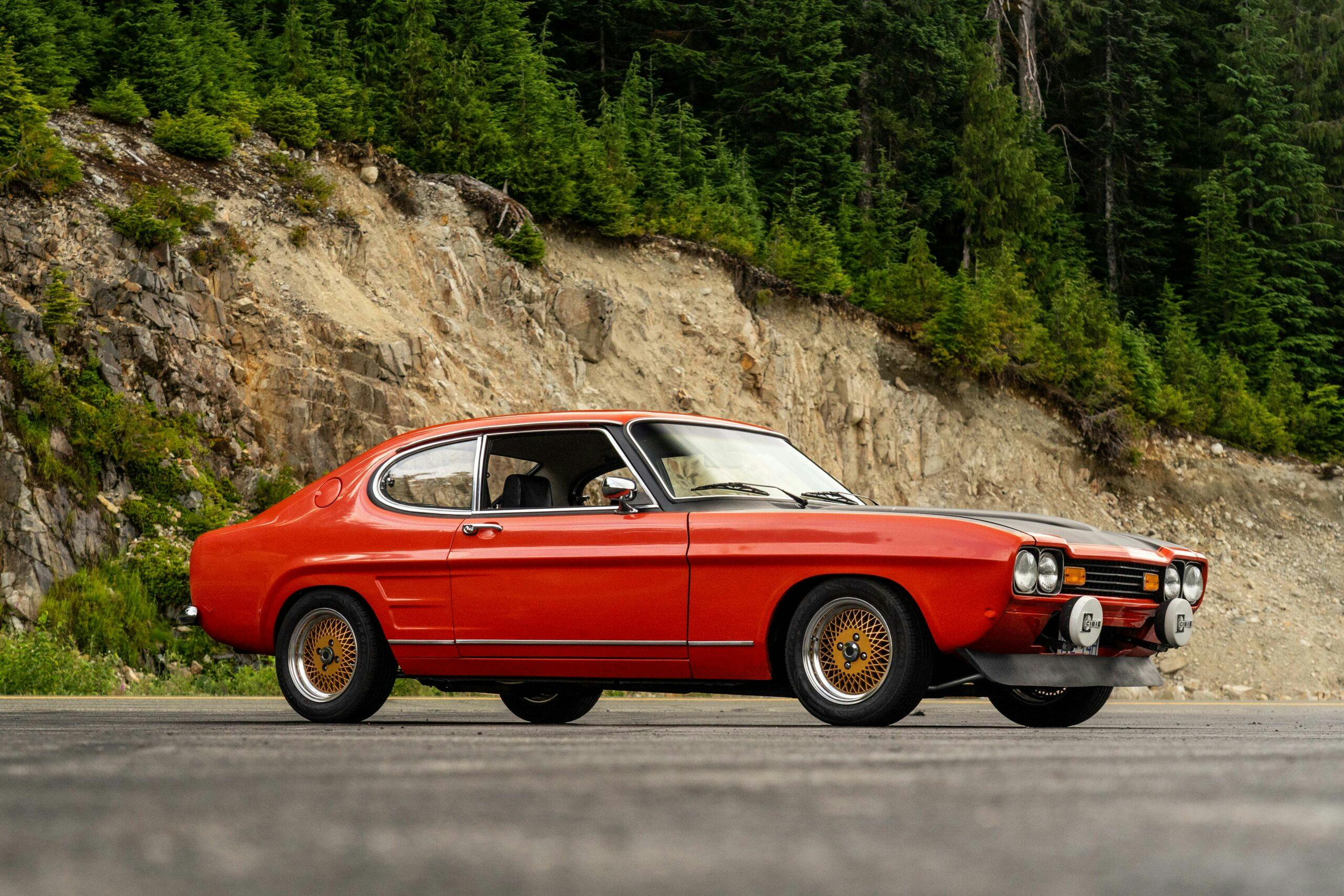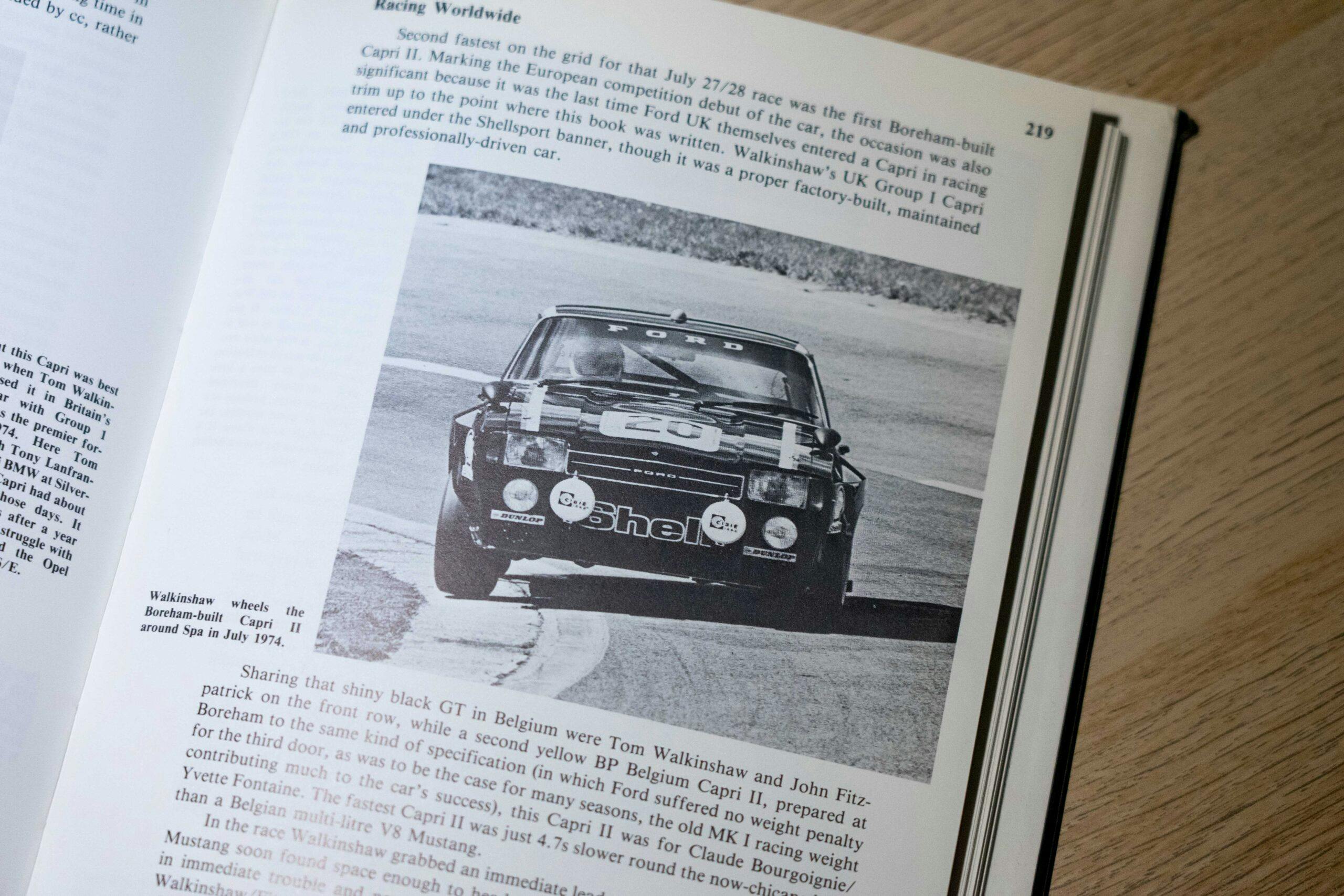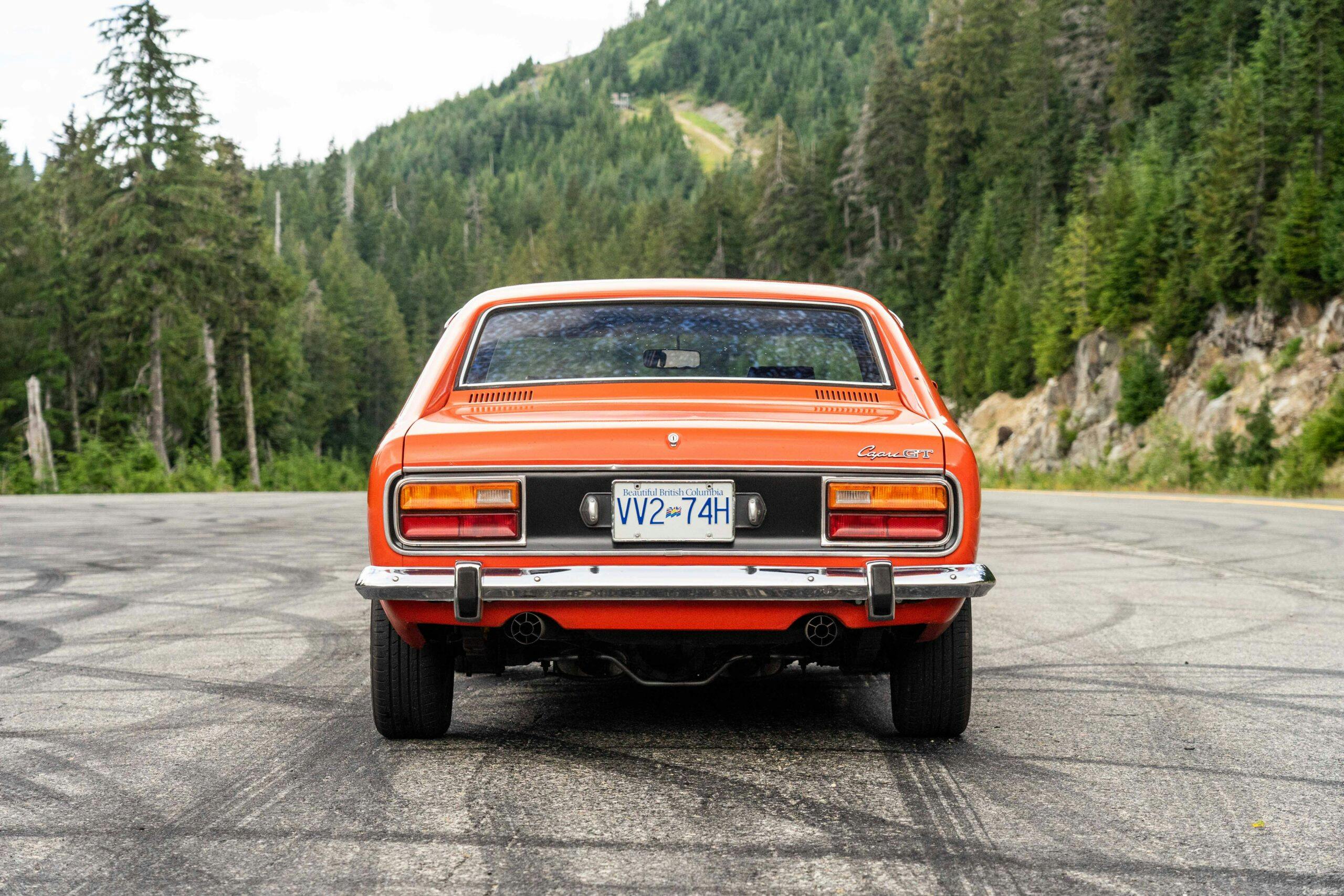Media | Articles
The Capri Was Europe’s Mustang
Ford’s decision to resurrect the Capri nameplate on an all-new battery-electric crossover for the European market makes a great deal of sense. Crossovers are what most people buy, even in the Euro market, and while large-scale EV adoption is taking longer than most thought, it’ll probably happen quicker on the other side of the Atlantic. By putting the well-recognized Capri name on a family-oriented EV, Ford gets to put out a new model with a familiar name. Ford doesn’t need to worry about any legal difficulties with branding, as Capri is an in-house nameplate, and the vehicle will perhaps tweak a bit of nostalgia.
Of course, none of that reasoning makes us like Ford’s decision—certainly not from behind the wheel of a 1974 Capri GT, as the car bursts out of a corner exit on a winding mountain road in Canada. Call it a mini-Mustang, call it Europe’s pony car—this is the genuine article, not a battery-powered platform borrowed from Volkswagen and shot with some heritage botox. This is the real Capri, and it’s utterly fantastic to drive.


The personality of the Capri GT is largely due to its parts-bin underpinnings, which were mostly lifted from the Mk. II Cortina. (Though it is perhaps a less-familiar badge to a North American audience, the Cortina did much to stoke the flames of Fast Ford enthusiasm across the pond.) The mechanicals of the Capri are as simple as they come: engine up front, four-speed transmission in the middle, drive axle out back. The suspension is Macpherson struts in the front and a live axle in the rear, with rack and pinion steering.
What other two-door sedan with everyday roots turned out to be a cultural icon? The original Mustang may have been a grand slam compared to the Capri’s Premier League overtime goal, but both are sporting heroes in their own right. They both offered a range of engine choices, were accessibly priced for a broad audience, and had everyday appeal along with a dash of performance.



The similarity between the pair is no accident. The mission of the Capri was to be Europe’s Mustang, and the same designer was involved in both projects, the Iowa-born Phillip T. Clark. In fact, Ford Europe’s little coupe would have been called the Colt, had not Mitsubishi (and, by extension, Plymouth) owned the rights to that name.
Marketplace
Buy and sell classics with confidence
Instead, the European coupe was dubbed Capri. The name came from a two-door version of the Ford Consul, itself a scaled-down version of a large American coupe—call it the Thunderbudgie. “Capri” was also something of a match for “Cortina”; both names had Mediterranean origins.
The Capri launched in early 1969 and was built in the UK, Belgium, and Germany. In North America, it was sold with the same name but under the Mercury brand, wearing four round headlights and the power bulge hood. (Elsewhere, you could buy a Mk I Capri with a flat hood and square headlights, which looked fairly stuffy by comparison.) Trim levels ranged from poverty spec to near-luxury, but the average Capri was priced to be within the budget of the average person.



The range of engines across all markets is frankly overwhelming—eventually, the Capri was also sold in South Africa and Japan. The most common option was a four-cylinder, which came in displacements from 1.3 to 2.0 liters. There was also a handful of V-6s. One rare standout was the Capri Perana (a deliberate misspelling, for copyright reasons), built by Basil Green Motors in South Africa. These first came with a V-6, but later were fitted with the 302-cubic-inch Windsor V-8 out of the Mustang. The Capri is not a large car, but there was enough room under its long nose for hot-rodders to cram a number of Ford V-8s in there.
Arguably, the engine you want is the V-6. This orange example is a 1974 Capri GT. It wears the earlier bumpers, giving it a cleaner look. Under the hood is a breathed-upon, 2.8-liter, narrow-angle Cologne V-6. When new, in the German-built cars sent to North America, the six offered an unremarkable 119 hp, but these engines are very tunable. Here, with a hotter cam and a few other tweaks, roughly 180 hp is on offer.




In your author’s eyes, the car is just about perfect. Its owner, Geoff Peterson, has a local reputation as a VW specialist (he’s shared his 200-hp Cali Look 1957 drag Beetle with us in a previous article), but he’s always wanted a Capri. When he bought this one, the car wasn’t running, so he fixed it up as a fun daily driver. He plans to do further adjustments here and there, but with the suspension sorted out with poly bushings, and a replacement driver’s seat and dished steering wheel, the Capri drives as good as it looks.
Capris are prone to rust, even in relatively dry locations, so finding them in complete condition is tricky. Ford sold an enormous number of these cars in the U.S. and Canada—something on the order of half a million—and most of them got chewed up by a third or fourth owner and sent to the scrapyard. Petersen says this car gets even more attention and stories from previous owners than his Beetle or Dune Buggy does. It’s impossible for him to stop for gas without talking to at least one person.

Happily, these impromptu discussions have led to a couple of project cars that Petersen has been able to find and rebuild for new owners. Parts for the Capri are relatively available, thanks to how strong their following is across the Atlantic. Used stuff and bodywork are tricky to find, but if you’re willing to pay, a proper restoration is certainly possible.
Like the Mustang, part of the Capri’s appeal is in its long motorsport pedigree. The excellent book Capri, by Jeremy Walton, breaks down these exploits, with some 300 pages of detail on Ford’s European battles with the likes of BMW and Porsche. During its heyday, Capris campaigned on iconic tracks from the Nürburgring to Spa-Francorchamps to Le Mans. Jackie Stewart raced a Capri. So did Niki Lauda.
Names like Zakspeed and Cosworth came to be associated with the hottest Capris on the track, and there were fierce and very collectible road-going models in the European market. A single Capri RS2600 was ordered in 1971 by the Deuce, Henry Ford II, for his son Edsel II to drive to college. It was finished in two-tone silver and blue, and paired a 150-hp, 2.6-liter V-6 with a curb weight of 2250 pounds.

But while the special and racing Capris are fun to learn about and obsess over—a Mustang’s worth of history and heritage, seen through a European lens—what really makes the original Capri such a delight is its simplicity. The new Capri is emblematic of its time. Roomy, fast, comfortable, and silent, it is competence delivered with all the charisma of a toaster oven. The old Capri is small, loud, quick rather than fast. With the four-speed manual, 40 mph feels like 100.
Shortly after our spin on the mountain, Peterson climbed into his Capri and drove it about 250 miles into British Columbia, searching for parts for his latest project. There’s a Capri that makes sense for the world we live in—but there’s another Capri that inspires love, and it doesn’t have a charging plug.


















What a great car, Bought it new in 73.
2600 cc V6 It went like a scared rabbit. Oh yah a 4 speed to boot. Bright yellow/black buckets
My wife’s car for 12 years ,she loved it.
I acquired a blue 1974 model (German-built) with a 2.8 liter V-6. It was my dream car out of high school because I could not afford any more prestigious sports car. With that Capri I made my intro to Autocross. I drove it for nearly 10 years and needless to say, it was highly modified by the time I parted with it. A few points of interest – the 2.8 V-6 which was very adaptable to modifications was re-introduced by Ford in their mini pickup trucks of the 1990’s. What killed many Capris (besides the rust), was that the universal joint was integral to the driveshaft – which meant you had to replace the entire driveshaft, something junkyards were quickly in short supply of. I found that the rear end of the Capri II adapted perfectly as a replacement when my unie’s went out. The added advantage of the Capri II was it had a slightly wider track, which gave my Capri a wider stance and better handling. I really miss that car!
The Mclaren Capri was another interesting version of the Capri. This one was in an empty warehouse. (This is a shared album) https://www.icloud.com/sharedalbum/#B1nJ0DiRHJE0pZs
i had a 72 v-6 , 4 spd , sunroof , british racing green with reclining front bucket seats , great car . gave it to my little brother . he wrecked it 4x and the last time was totaled . you never see them anymore
I bought a V6 4 speed Capri in 1973 new for $3600. My first new car. Drove it all through college and beyond. It was wonderful. Fast forward many decades and I saw one for sale and I bought it for nostalgia’s sake. It was a fun step back in time. However, my fantasy back in the day was the South African Perana, a Capri that was raced that had a Ford V8 in it. So that is what I did. It was a fairly easy swap and there are a number of Capri owners doing that now. Fun with a capital F.
Headline is wrong, T5’s were Yurp’s Mustangs much before the Capri.
One word, Perana.
Signed, Capri lover.
I first had a 1970 Mk1 1600 GT XLR. Drove it into the back of a lorry! Fixed it up and sold it. Then bought a 1979 Mk3 3000 Ghia. That was a real car. In the meantime my brother had a 1978 Mk2 1600 GT. He was pissed I had the more powerful car. So he sold it and bought a Lotus Cortina! We eventually entered the Cortina into the British Saloon Car Championship. We never got anywhere. But had so much fun getting there! Sadly, my brother passed way a few years ago.
My 76 Capri V6 w/ Black Cat trim would overheat in slush from meting snow. We discovered the thermostat was factory mounted on the exit side of the block and would close with the cold soaking, blocking flow from the block. After remounting on the inlet side, no more overheating. Otherwise is was a very reliable and enjoyable car.
funny – looks a lot like my good old Mustang II’s.
just sold my 74 capri it went to the netherlands i,ve always liked the 2 liter best very good for those windy roads i was going to put a thunderbird turbo coupe 2.3 & 5spd in it.
These were great little cars that were more akin to Boy Racers than a Mustang which really had been out for about 5 or 6 years before they hit the American shores. They were fun to drive and race and were respectable in both. I had three of these one 71 2000 with this exact color scheme that I put in a ditch up near Sequim. Drove another up the Alcan from La Grande, OR. Oh and the 1600 that threw a timing belt traveling from NJ to FL requiring a roadside repair. Great memories(?). Here’s to you Ralph and Lida R (who raced them), Vahe who painted old red, and Chuck my brother who was all in with our Capri shenanigans.
I agree with everything that was said, my brother had a Mk 1 Capri and I had a Mk 2 Cortina GT both were great fun to drive and easy to maintain
My brother spent a lot of time road rallies and enjoyed that I just enjoyed the mountain roads.
I had a ’71 1.6 liter, my best friend had a ’73 2 liter, my older brother had a gorgeous ’73 2.6 liter, 4 of his good friends had ’74’s. It was always a blast to get together and drive around en masse as a suburban gang of Capri’s! Lots of fun wrenching on them, too.
I learned to drive in a Capri 1 and in a 1963 Opel Kadett, (Oliver for Top Gear people).
We owned the Capri as my Ma wanted one. I personally loved our Opel Manta A more.
Both are highly collectable. today. From a time when cars were simple and quite reliable. And somehow better in my eyes. I am as outdated as the cars I love.
I briefly had a 1972 Capri automatic and the four cylinder. I thought it was a great little car. It handled well and it was quick (even with the 4 cylinder). Drove it the first summer I got my license then my family sold it. Might consider another if one comes around.